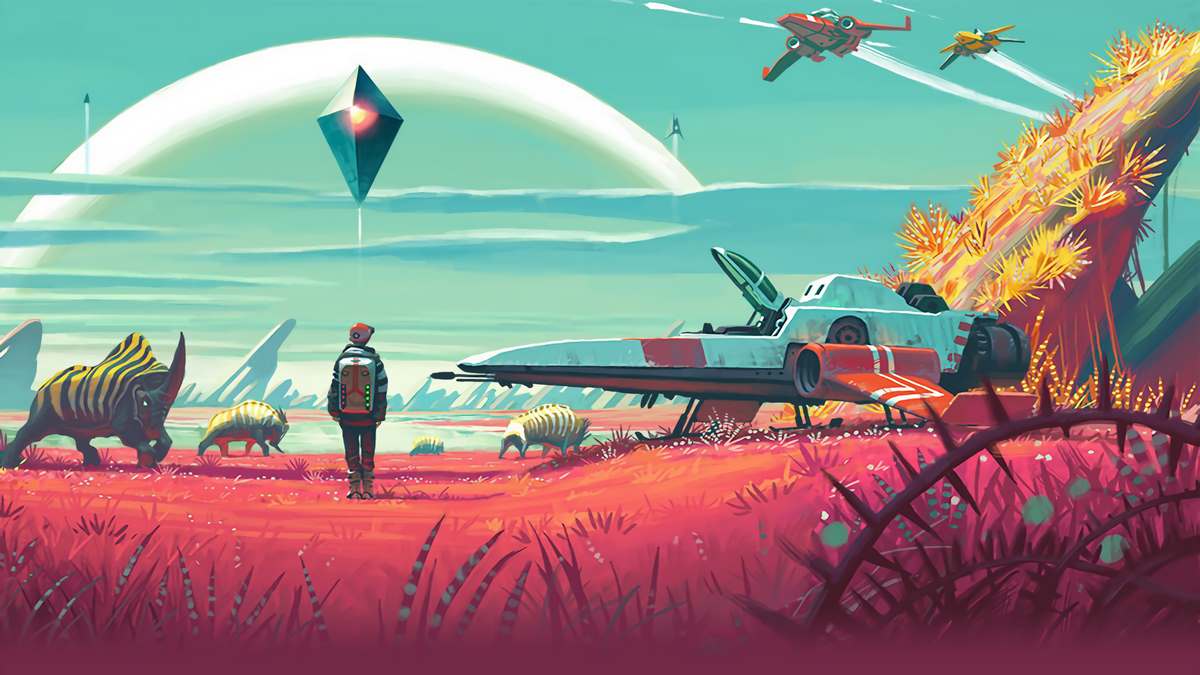“No Man’s Sky” is one of the most anticipated indie games of 2016, promising to give the player a truly vast universe to explore. First and foremost, it’s worth remembering that “No Man’s Sky” is one of the most hyped indie titles ever, thanks to its groundbreaking premise. Check out my full review to find out whether it’s worth buying and playing!
The chief asset of No Man’s Sky is its universe, which seems truly “infinite.” There are 18,446,744,073,709,551,616—in other words, 18 quintillion—planets in No Man’s Sky. Visiting each one for even a single second would take over 585 billion years.
Every planet is enormous and takes a long time to traverse. They’re generated by calculations that instruct your console what to render as you approach. It’s as if each world exists only as numbers and formulas until you actually arrive—only then do they materialize into something you can see.
Make no mistake: these numbers don’t imply random generation. All the formulas making up the universe follow logical rules. For instance, planets close to their sun tend to be desert worlds, whereas distant ones are frozen. Life-bearing planets usually occupy the middle ground, where temperatures are temperate.
“No Man’s Sky” has no fixed storyline, yet it offers an overarching goal for the boldest explorers: a journey to the galactic center. What awaits at the heart of the universe remains a mystery, but making it that far is a challenge that demands significant equipment upgrades.
According to the developers, the real narrative lies in the stories each player will create for themselves. You can play in many ways: as a wildlife cataloger, a merchant trading resources, or even a space-faring warrior battling pirates and rival factions.
Documenting a planet’s creatures nets you currency—Units—which you can spend on new gear. If you choose the merchant route, you’ll need to learn alien languages via ancient artifacts. If you prefer combat, you’ll want a starship with heavier armaments.
Players adopting a more aggressive path—hunting wildlife or strip‑mining resources—must contend with an interstellar police force: the Sentinels. Much like in GTA, their response escalates with your offenses.
Shoot wildlife and small floating drones will swarm you, aiming to drive you off the planet. Destroy a few and stronger Sentinels arrive, eventually culminating in massive hunter ships. If an animal attacks you first, the drones simply observe rather than retaliate.
Tip: scaring wildlife by shooting near them is often enough to keep them away.
Interestingly, not every world is patrolled. As you explore farther from civilization, you’ll discover unguarded planets where you can operate without Sentinel interference.
Regarding gameplay, one of the most crucial elements is upgrades, which determine how much of the universe you can traverse and interact with. By harvesting materials on planets, you can enhance your starship, weapon, and exosuit.
For instance, some resources are too dense or large to harvest without a better mining laser. Toxic atmospheres and extreme cold require advanced hazard protection. And to reach distant star systems, you must upgrade your hyperdrive.
You’ll also encounter hidden or abandoned alien technologies, discovering new ships or gear upgrades. These technologies are strategically placed, so staying a keen observer of your surroundings is key.
Verdict
- Graphics
- Interface
- Entertainment
- Gameplay
- Features
Summary
Overall, we can say that “No Man’s Sky” is a good game. However, the objectives and diversity of the game are repetitive, making the player lose the desire to perform monotonous tasks.
In addition, it is very likely that Hello Games will release “Updates” to add more content to the game, but it remains to be seen whether the player is willing to wait for such updates.






















































































